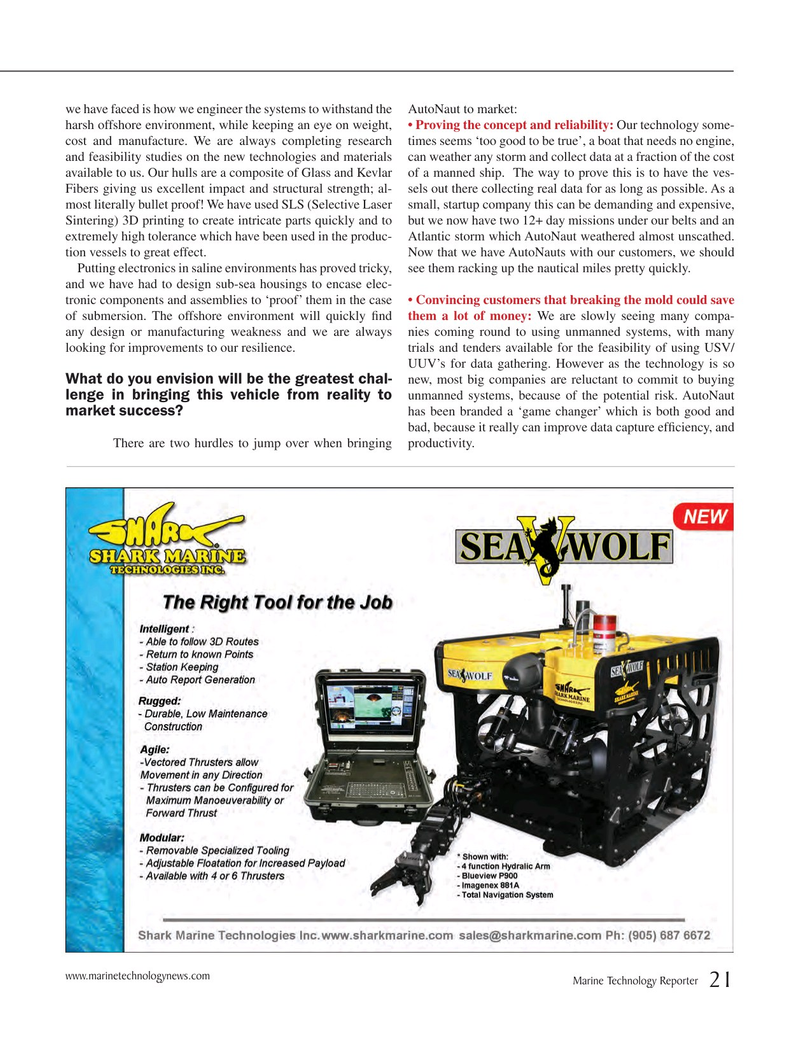
Page 21: of Marine Technology Magazine (May 2015)
Underwater Defense
Read this page in Pdf, Flash or Html5 edition of May 2015 Marine Technology Magazine
we have faced is how we engineer the systems to withstand the AutoNaut to market: harsh offshore environment, while keeping an eye on weight, • Proving the concept and reliability: Our technology some- cost and manufacture. We are always completing research times seems ‘too good to be true’, a boat that needs no engine, and feasibility studies on the new technologies and materials can weather any storm and collect data at a fraction of the cost available to us. Our hulls are a composite of Glass and Kevlar of a manned ship. The way to prove this is to have the ves-
Fibers giving us excellent impact and structural strength; al- sels out there collecting real data for as long as possible. As a most literally bullet proof! We have used SLS (Selective Laser small, startup company this can be demanding and expensive,
Sintering) 3D printing to create intricate parts quickly and to but we now have two 12+ day missions under our belts and an extremely high tolerance which have been used in the produc- Atlantic storm which AutoNaut weathered almost unscathed. tion vessels to great effect. Now that we have AutoNauts with our customers, we should
Putting electronics in saline environments has proved tricky, see them racking up the nautical miles pretty quickly. and we have had to design sub-sea housings to encase elec- tronic components and assemblies to ‘proof’ them in the case • Convincing customers that breaking the mold could save of submersion. The offshore environment will quickly

 20
20

 22
22
